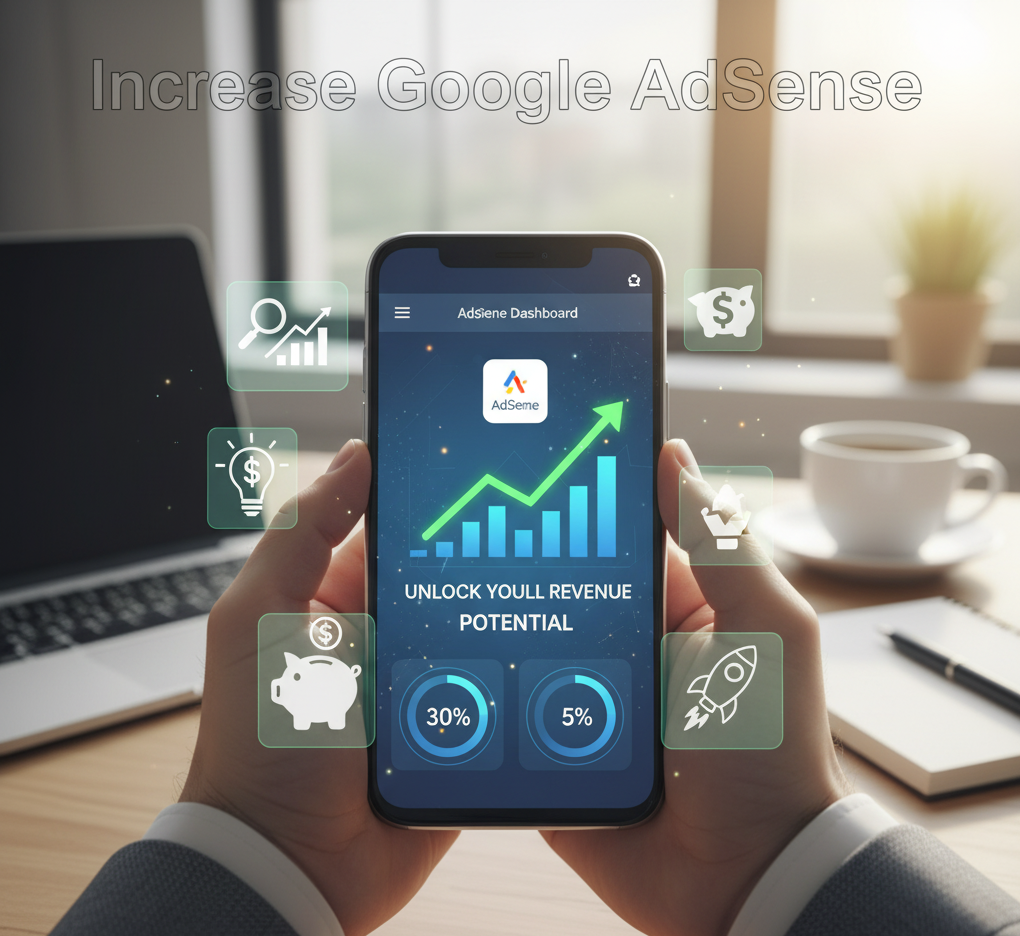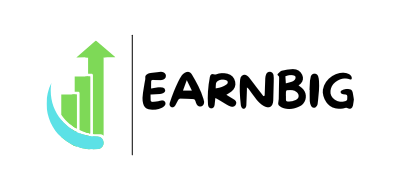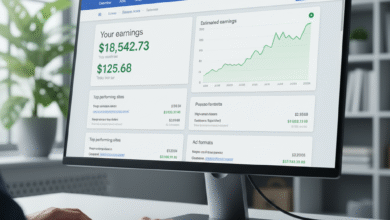Top 10 Ways to Increase Google AdSense Earnings and Boost Your Website Revenue

If you’ve been monetizing your website with Google AdSense, you’ve likely wondered how to squeeze more revenue from your existing traffic. The good news? With the right strategies, you can significantly boost your AdSense earnings without necessarily increasing your visitor count. In this comprehensive guide, I’ll walk you through the top 5 ways to increase Google AdSense revenue, backed by data insights and real-world experience.
Understanding the AdSense Revenue Formula
Before diving into optimization strategies, let’s understand what drives your AdSense income:
AdSense Revenue = Traffic × CTR × CPC
Where:
- Traffic = Number of page views
- CTR (Click-Through Rate) = Percentage of visitors who click ads
- CPC (Cost Per Click) = Amount advertisers pay per click
The beauty of this formula? You can improve each component independently to earn more with Google AdSense.

1. Strategic Ad Placement: Position Your Ads Where Eyes Naturally Land
Ad placement is arguably the most impactful factor in your AdSense performance. According to eye-tracking studies, users follow predictable viewing patterns on web pages—typically the “F-pattern” for text-heavy content.
High-Performing Ad Locations
| Placement Position | Average CTR Increase | Best For |
|---|---|---|
| Above the fold | 25-35% | All content types |
| Within content (after 1st paragraph) | 30-40% | Long-form articles |
| End of article | 15-25% | Engaged readers |
| Sidebar (top section) | 10-20% | Desktop users |
Actionable Tips:
- Above the Fold Priority: Place at least one ad unit in the visible area before users scroll. This ensures maximum visibility.
- In-Content Integration: Insert responsive ad units after your first or second paragraph. These blend naturally with your content and catch readers when they’re most engaged.
- Multiple Units Strategy: Use the maximum allowed ad units (currently 3 standard ads per page), but ensure they don’t overwhelm your content.
- Mobile Optimization: With mobile traffic dominating most websites, prioritize responsive ad formats that adapt seamlessly to smaller screens.
Pro Tip: “The best ad is one that doesn’t look like an ad. When ads blend naturally with your content’s design, they perform 40% better on average.” — Google AdSense Optimization Team
2. Ad Format Optimization: Choose Units That Convert
Not all ad formats perform equally. Understanding which formats resonate with your audience is crucial to ways to increase Google AdSense revenue.
Top-Performing Ad Formats in 2025
Display Ads:
- Responsive Display Ads: Automatically adjust to available space and device types
- Large Rectangle (336×280): Consistently high CTR across niches
- Leaderboard (728×90): Excellent for header placement on desktop
Native Ads:
- In-Feed Ads: Blend seamlessly with article lists or product feeds
- In-Article Ads: Appear between paragraphs, mimicking editorial content
Performance Comparison:
Responsive Display Ads: ████████████ (Best overall performer)
Native In-Article Ads: ███████████ (Highest CTR for blogs)
Large Rectangle: ██████████ (Solid all-rounder)
Traditional Banner: ███████ (Declining performance)
Implementation Strategy:
- Test multiple formats for 2-3 weeks to gather meaningful data
- Monitor your AdSense performance reports to identify top performers
- Replace underperforming units with formats that generate higher RPM (Revenue Per Thousand Impressions)
- Enable Auto Ads as a supplementary strategy, but maintain manual control over primary placements
3. Content Quality & Niche Selection: Target High-Value Topics
The topics you write about directly impact your CPC rates. Some niches attract advertisers willing to pay significantly more per click.
High-Paying AdSense Niches (Average CPC)
| Niche Category | Average CPC | Competition Level |
|---|---|---|
| Insurance | $15-$50 | Very High |
| Banking & Finance | $12-$35 | Very High |
| Legal Services | $10-$45 | High |
| Web Hosting | $8-$25 | High |
| Real Estate | $6-$20 | Medium-High |
| Health & Wellness | $5-$15 | Medium |
| Technology | $3-$12 | Medium |
| Travel | $2-$8 | Medium |
Content Optimization Strategies:
- Create Comprehensive Guides: Longer, in-depth articles (1,500+ words) tend to earn more because they:
- Keep visitors on page longer
- Allow for more ad placements
- Rank better in search engines
- Target Commercial Intent Keywords: Focus on terms that indicate purchasing intent like “best,” “review,” “comparison,” or “how to buy”
- Update Existing Content: Refresh old articles with current information, improved formatting, and optimized ad placements
- Semantic Keyword Integration: Beyond your primary keywords, incorporate related terms that search engines associate with your topic. For “increase AdSense earnings,” also use phrases like “boost ad revenue,” “maximize monetization,” “improve CPM rates,” and “optimize publisher income.”
4. Website Speed & User Experience: The Hidden Revenue Multiplier
Page load speed directly impacts both your search rankings and AdSense performance. Google’s data shows that a 1-second delay in page load time can reduce conversions by 7%.
Speed Optimization Checklist:
Technical Improvements:
- ✅ Enable lazy loading for ads (loads ads only when visible)
- ✅ Compress images using WebP format
- ✅ Minimize CSS and JavaScript files
- ✅ Implement browser caching
- ✅ Use a Content Delivery Network (CDN)
- ✅ Choose a quality hosting provider
AdSense-Specific Optimizations:
- Use asynchronous ad code (AdSense’s default setting)
- Limit the number of ad units if page speed suffers
- Avoid auto-refreshing ads, which can slow performance
User Experience Factors:
Navigation & Layout:
- Clear, intuitive site structure
- Mobile-responsive design
- Readable font sizes (minimum 16px for body text)
- Adequate white space around ads
Content Readability:
- Short paragraphs (2-3 sentences)
- Descriptive subheadings
- Bullet points for scannable content
- Visual elements (images, infographics, tables)
Data Insight: Websites with Core Web Vitals scores in the “good” range see 24% higher AdSense revenue on average compared to those with “poor” scores.
5. Traffic Quality & Audience Targeting: Attract Valuable Visitors
Not all traffic is created equal. Strategic traffic generation focuses on attracting visitors most likely to engage with ads.
High-Value Traffic Sources:
Organic Search (SEO):
- Advantage: Highest intent and best long-term ROI
- Strategy: Target long-tail keywords with commercial intent
- Expected CTR: 2-5% for well-optimized sites
Direct & Referral Traffic:
- Advantage: Loyal, engaged audience
- Strategy: Build email lists, encourage social sharing
- Expected CTR: 1.5-3%
Social Media:
- Advantage: Large potential reach
- Strategy: Focus on platforms where your niche thrives
- Expected CTR: 0.5-2% (varies significantly by platform)
Geographic Targeting Considerations:
Traffic from different countries generates varying CPCs. While you can’t control where visitors come from, understanding these differences helps set realistic revenue expectations:
Tier 1 Countries (Highest CPC):
- United States, Canada, United Kingdom, Australia, Germany
Tier 2 Countries (Moderate CPC):
- France, Italy, Spain, Japan, South Korea
Tier 3 Countries (Lower CPC):
- India, Brazil, Mexico, Indonesia, Philippines
Content Distribution Strategy:
- SEO Foundation: Optimize every article for search engines
- Email Marketing: Build and nurture an email list for consistent traffic
- Social Amplification: Share content strategically on relevant platforms
- Community Engagement: Participate in forums and communities in your niche
- Guest Posting: Write for established sites to attract their audience
Advanced Optimization Techniques
A/B Testing Your Ad Strategy
Continuous testing is essential for maximizing AdSense revenue:
- Test one variable at a time: Ad placement, format, color scheme
- Run tests for minimum 2 weeks: Ensure statistical significance
- Document results: Track RPM, CTR, and user engagement metrics
- Implement winners: Apply successful variations site-wide
AdSense Experiments Feature
Google provides built-in A/B testing through AdSense Experiments:
- Navigate to “Optimization” → “Experiments” in your AdSense dashboard
- Create experiments comparing different ad settings
- Let Google automatically show variations to different users
- Review performance data and implement winning variations
Block Low-Performing Ads
Not all ads are profitable. Low-quality or irrelevant ads can:
- Lower your overall CTR
- Frustrate your audience
- Reduce revenue per click
Action Steps:
- Review your “Advertiser URLs” report in AdSense
- Block advertisers with abnormally low CPCs
- Block irrelevant ad categories that don’t match your audience
- Use the “Ad review center” to approve ads before they appear
Tracking Your Progress: Key Metrics to Monitor
To effectively earn more with Google AdSense, monitor these critical metrics weekly:
| Metric | What It Measures | Target Benchmark |
|---|---|---|
| RPM | Revenue per 1,000 impressions | $5-$20+ (varies by niche) |
| CTR | Ad click-through rate | 1-3% |
| CPC | Cost per click | $0.20-$5+ (varies by niche) |
| Page Views | Total pages loaded with ads | Steady growth |
| Bounce Rate | Visitors who leave immediately | <60% |
| Session Duration | Average time on site | >2 minutes |
Use Google Analytics alongside your AdSense reports to understand the complete picture of how users interact with your content and ads.
Common Mistakes That Kill AdSense Revenue
Avoid these pitfalls that plague many publishers:
❌ Too Many Ads: Overwhelming visitors with excessive ads hurts user experience and violates AdSense policies ❌ Ignoring Mobile Users: With 60%+ of traffic being mobile, non-responsive designs lose significant revenue ❌ Invalid Click Activity: Never click your own ads or encourage others to click ❌ Poor Content Quality: Thin, duplicate, or plagiarized content results in low CPC and potential account suspension ❌ Neglecting Policy Compliance: Stay current with AdSense policies to avoid warnings or bans
Your 30-Day Action Plan to Increase AdSense Revenue
Ready to implement these strategies? Follow this progressive plan:
Week 1: Foundation
- Audit current ad placements
- Check mobile responsiveness
- Review site speed (use Google PageSpeed Insights)
Week 2: Optimization
- Implement strategic ad placements (above fold, in-content, end of article)
- Test different ad formats
- Block underperforming advertisers
Week 3: Content & SEO
- Create high-value content targeting commercial keywords
- Update older posts with better optimization
- Improve internal linking structure
Week 4: Testing & Refinement
- Set up AdSense Experiments
- Analyze performance data
- Double down on what works
Conclusion: Consistency Is Key to AdSense Success
Mastering ways to increase Google AdSense revenue isn’t about quick hacks—it’s about implementing proven strategies consistently and measuring results. By optimizing ad placement, choosing the right formats, creating valuable content, improving user experience, and attracting quality traffic, you can significantly boost your AdSense earnings.
Remember that AdSense optimization is an ongoing process. What works today might need adjustment tomorrow as user behavior, ad formats, and platform algorithms evolve. Stay curious, keep testing, and always prioritize your audience’s experience alongside monetization goals.
Start with one or two strategies from this guide, implement them thoroughly, measure the results, and then move to the next. Within 60-90 days, you should see measurable improvements in your AdSense revenue.
What’s your next step? Choose one strategy from this guide and implement it this week. Track your results and share your success story!
Additional Resources to Explore
- Google AdSense Help Center – Official documentation and policy updates
- Google Analytics – Track user behavior and traffic sources
- Google PageSpeed Insights – Analyze and improve site speed
- AdSense Optimization Tips – Direct from Google’s optimization team
READ MORE : Top 10 AI Jobs and Freelance Gigs to Earn Big in 2025
READ MORE : Top Secrets to Boost Your Google AdSense Earnings Fast in 2025

